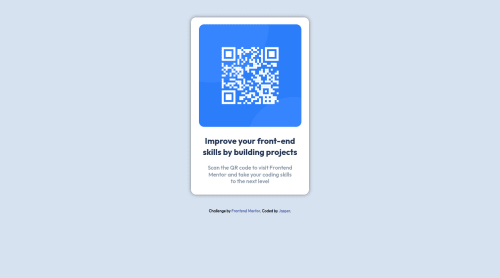QR code site using margin for layout

Solution retrospective
I had in mind for the layout to use display flex to center the container but the footer portion just had to make it a two column layout so i opted for using margin auto
Please log in to post a comment
Log in with GitHubCommunity feedback
- @juanpb96
Hi Jasper 👋
Good job on your solution! 👍... As you want to use flex to center your content I will give you one idea for you to try.
In your
bodyset width to 100% and height to 100vh, this takes the total size of the screen (set margin to 0, just to prevent horizontal scrolling). Then, adddisplay: flexandflex-flow: columnto keep the layout that you want. To centralize your content usejustify-content: centerandalign-items: center, this will do the magic 🧙. Finally, remove margin in your.containerclass.Another thing I saw is that you have 'Document' as your page title.
Join our Discord community
Join thousands of Frontend Mentor community members taking the challenges, sharing resources, helping each other, and chatting about all things front-end!
Join our Discord